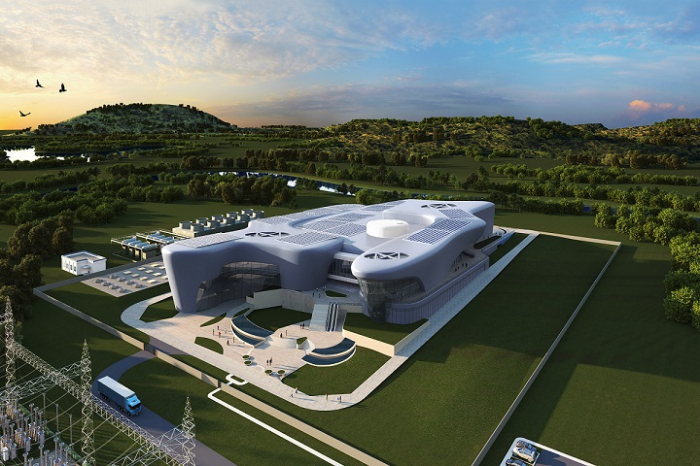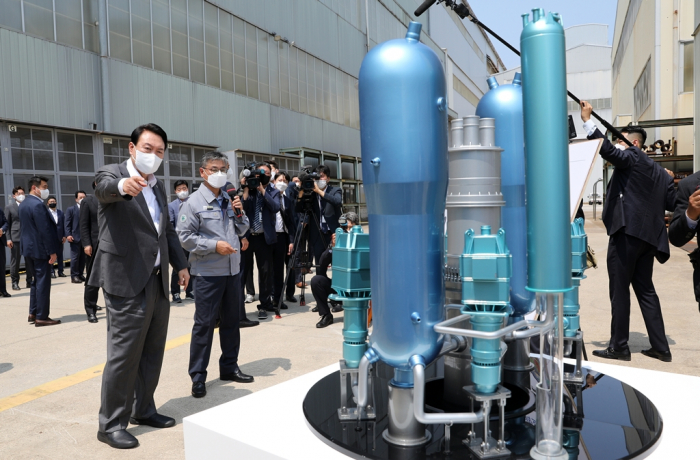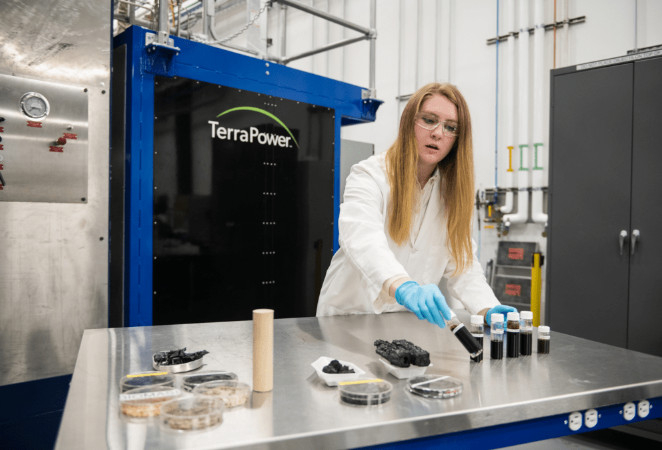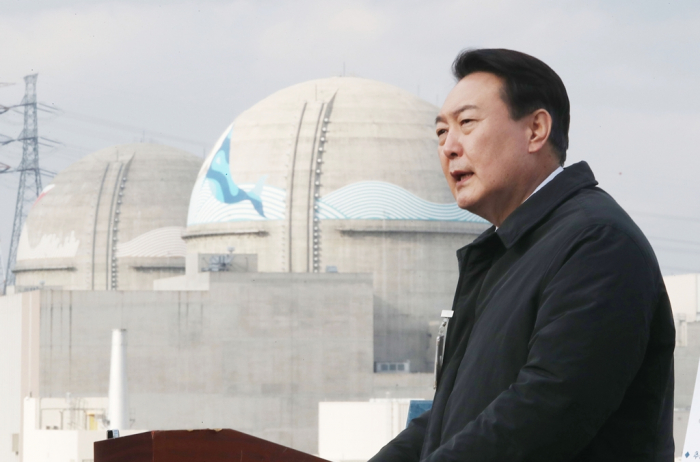Korea’s small nuclear reactor technology falls behind global peers
But SMR tie-ups are on the rise after President Yoon Suk Yeol rescinded his predecessor’s anti-nuclear policy
By Mar 31, 2023 (Gmt+09:00)
LG Chem to sell water filter business to Glenwood PE for $692 million


Kyobo Life poised to buy Japan’s SBI Group-owned savings bank


KT&G eyes overseas M&A after rejecting activist fund's offer


StockX in merger talks with Naver’s online reseller Kream


Mirae Asset to be named Korea Post’s core real estate fund operator



South Korea’s small-sized nuclear reactor technology has fallen behind other major countries due to the years of the previous government’s anti-nuclear initiatives, data showed on Friday.
According to the government’s 2022 big-data-based industrial revolution strategy report on nuclear power obtained by The Korea Economic Daily, Korea stands significantly low in global rankings of small modular reactor (SMR) patents in terms of patent influence and market potential.
The country’s SMR patent influence was rated as one-eighteenth that of the US, the market leader, while its nuclear market securing capability was a fortieth that of China and a fifteenth of Japan’s, according to the report.
In terms of the number of SMR-related patent applications, US nuclear fission technology provider NuScale Power LLC topped the list with 57 applications over two decades from 2001.
TerraPower, founded by Bill Gates, came in second, followed by Westinghouse Electric Corp. KEPCO E&C Co., a unit of state-run Korea Electric Power Corp. ranked ninth behind Japan’s Toshiba.

NUCLEAR INDUSTRY’S GAME CHANGER
SMRs, designed to produce less than 300 megawatts-electric, are regarded as next-generation energy sources due to their lower investment costs and fewer carbon emissions than existing large nuclear power plants. SMRs are also safer as they can be cooled without complicated safety devices.
With major countries increasingly adopting safe and sustainable energy sources, small modular reactors will be commercialized within the next five to 10 years and the global SMR market is forecast to reach 620 trillion won ($477 billion) by 2035, according to the Nuclear Energy Agency under the Organization for Economic Cooperation and Development.
The US, China, Russia and the UK are said to be developing over 70 types of SMRs, including sodium-cooled fast reactors (SFRs), high-temperature gas-cooled reactors (HTRs), molten salt reactors (MSRs), lead-cooled fast reactors (LFRs) and pressurized water reactors (PWRs).
“SMR is a technology that is attracting keen attention worldwide because of its flexibility in terms of location and output while significantly improving safety compared to existing nuclear power plants,” said an official at the Korea Intellectual Property Strategy Agency. “It will be a game changer in the energy industry.”

KOREA-US SMR PARTNERSHIP
Korean companies are joining hands with foreign companies to take advantage of the technology.
In January, DL E&C Co. and Doosan Enerbility Co. said they are investing a combined $25 million in X-Energy Reactor Co., a US SMR developer.
SK Group’s holding company SK Inc. and its energy and battery affiliate SK Innovation Co. last year invested $250 million in TerraPower.
Last November, HD Hyundai, formerly Hyundai Heavy Industries Group, said it is investing $30 million, through its shipbuilding affiliate Korea Shipbuilding & Offshore Engineering Co., in TerraPower.
Meanwhile, Westinghouse said last year it would install its SMR, eVinci, at Pennsylvania State University. TerraPower is building a 1 trillion won SFR plant on the site of an aging coal-fired power plant in Wyoming with a view to operating it in 2030.

The Joe Biden administration earmarked $1.65 billion in SMR research and development in 2022.
Business partnerships between Korea and the US in the SMR business have been growing in recent years and are expected to rise further under the Yoon Suk Yeol government.
Since he was sworn in last May, he has pledged that his government will rescind his predecessor’s policy of phasing out nuclear energy.
Yoon has committed to actively promoting the development of small modular reactors to foster Korea's nuclear reactor industry.
Write to Hae-Sung Lee at ihs@hankyung.com
In-Soo Nam edited this article.
-
 EnergyDL E&C, Doosan to invest $25 mn in SMR developer X-Energy
EnergyDL E&C, Doosan to invest $25 mn in SMR developer X-EnergyJan 18, 2023 (Gmt+09:00)
2 Min read -
 EnergyDoosan, DL consortium to invest $130 mn in X-Energy for SMR project
EnergyDoosan, DL consortium to invest $130 mn in X-Energy for SMR projectDec 12, 2022 (Gmt+09:00)
2 Min read -
 Carbon neutralityHyundai Heavy to invest $30 million in TerraPower for SMR business
Carbon neutralityHyundai Heavy to invest $30 million in TerraPower for SMR businessNov 04, 2022 (Gmt+09:00)
2 Min read -
 ConstructionHyundai E&C, Holtec embark on detailed design of SMR-160 model
ConstructionHyundai E&C, Holtec embark on detailed design of SMR-160 modelOct 20, 2022 (Gmt+09:00)
2 Min read -
 Business & PoliticsKorea’s Yoon govt to raise nuclear power to 34% of energy source
Business & PoliticsKorea’s Yoon govt to raise nuclear power to 34% of energy sourceApr 21, 2022 (Gmt+09:00)
3 Min read -
 EnergySuresofttech wins deal to verify NuScale’s mini reactor software
EnergySuresofttech wins deal to verify NuScale’s mini reactor softwareMar 11, 2022 (Gmt+09:00)
2 Min read


